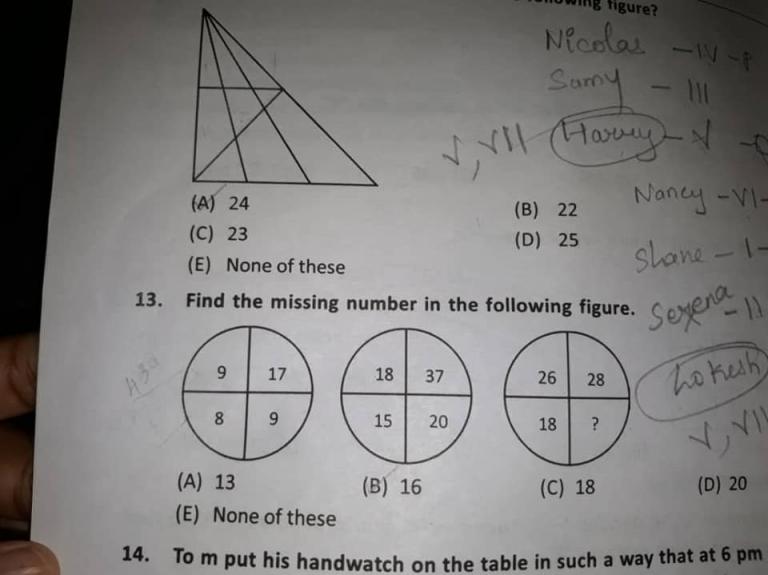An Invariant Math Question
Someone asked (Question):
“You have 17 red and 17 blue balls, and you remove 2 at a time. If the two are the same colour, add in one extra blue ball. If they are different colours, add in an extra red ball. What colour is the final ball removed?”
.
.
.
.
.
.
.
.
.
.
.
.
.
.
.
.
.
.
.
.
.
.
.
.
.
.
.
.
.
.
.
.
.
.
.
.
.
.
.
.
.
.
Try first before reading a take on it:
.
.
.
.
.
.
.
.
.
.
.
.
.
.
.
.
.
.
.
.
.
.
.
.
.
.
.
.
.
.
.
.
.
.
.
.
.
.
.
.
.
.
.
.
A possible solution:
“This is based on the principle of invariance in Mathematics (look for something which does not change).
Based on the requirements of the problem beginning with 17r and 17b (where r and b represents red and blue balls respectively), we have either one of the three cases below:
Case 1 (2 red balls are removed)
causing, 17r -2r +1r = 15r and 17b + 1b = 18b. That is, we have (15r, 18b) here. This means to say that there are 15 red balls and 18 blue balls now.
Case 2 (2 blue balls are removed)
causing, 17r (no change) and 17b – 2b + 1b = 16b. That is, we have (17r, 16b) here.
Case 3 (a red and a blue ball is removed)
causing, 17r – 1r + 1r = 17r and 17b – 1b = 16b. That is, we have (17r, 16b) here too.
Next, consider ‘parity’ (even or odd).
In particular, we note that the total number of red balls (at any step) is always ‘odd’ (began with 17, cases 1,2 or 3 yields 15, 17 or 17 respectively —> 15 & 17 are odd numbers). If we repeat the steps in the problem for cases 1, 2 or 3 above, the numbers may change but the parities for the total number of red balls remains as “odd”.
This is because (as shown above), the ‘total number of red balls’ either ‘decreases by two’ (e.g. 17r – 2r = 15r, Case 1) or ‘remains the same’ (17r, Case 2 or 3) at any step causing its “parity” to remain the “same” as its initial parity which is “odd”(17).
Thus, assuming that the game ends with “1 last ball” (1 is an odd number), the only possibility is that this ball MUST be red to satisfy the “condition” given in the problem that the ‘total number of red balls’ at ANY step must be “odd”.
That’s why the “last ball” must be “red” (answer). QED.



